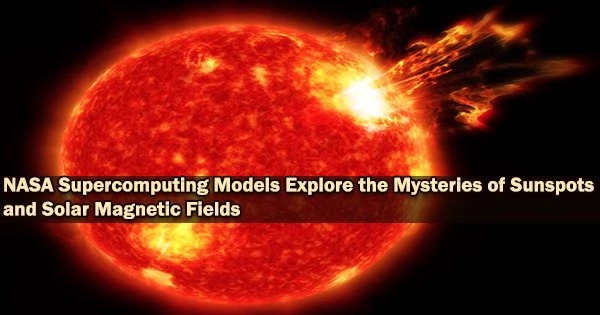The Sun is a dynamic and complicated star that changes continually due to storms, flares, and movement. It provides much more to Earth than just light. The majority of solar activity that we can witness is governed by magnetic fields, but it is still unclear how they do this.
A “torsional oscillation” is a cycle of sunspot formation that is one of the most notable magnetically driven solar features. Recent results based on simulations out of NASA’s Advanced Supercomputing facility at NASA’s Ames Research Center in California’s Silicon Valley are painting a more complete picture of this feature.
The strength of these torsional oscillations, which are caused by the magnetic fields in the deep interior of the Sun, is continuing to weaken, according to a computational study of data about the structure and dynamics of the Sun from two NASA spacecraft.
As a result, the current sunspot cycle may be weaker than the one before it, and the Sun’s long-term pattern of dwindling magnetic fields is probably going to continue.
Such modifications to the Sun’s interior could have an effect on Earth’s climate, atmosphere, and space weather. When a sunspot starts to form on the surface of the Sun at a latitude of around 30 degrees, the sunspot cycle starts. After that, the formation zone moves closer to the equator.
The polar regions of the Sun’s global magnetic field are switched at its maximum intensity, as if there were a positive and negative end of a magnet at each of the Sun’s poles. These 22-year variations are caused by dynamo processes inside the Sun.
A dynamo process is when a magnetic field is kept in place by rotating, convecting, and electrically conducting fluid or plasma. These hidden, inaccessible deep magnetic fields have an impact on solar rotation variations, producing a cyclical pattern of migrating flows across zones and torsional oscillations. In some areas, this rotation speeds up or slows down, while in others it remains steady.
This analysis used data from two NASA missions, the Solar and Heliospheric Observatory and the Solar Dynamics Observatory. More than five petabytes of data from 22 years of observations from both missions were analyzed by the Joint Science Operations Center at Stanford University.
Scientists were able to see this intricate pattern more clearly because to flow analysis, numerical modeling, and visualization performed on NASA’s supercomputers.
By combining models of the Sun’s magnetic fields and sunspot activity in the future, advances in data resolution, data analysis methods, and simulation models will advance our comprehension of how these processes affect the Sun’s deep interior.
The Sun’s activities, especially those occurring below its surface, have an impact on the space weather, which has an effect on the entire solar system, including Earth. The more information we have about the star that provides light for our planet, the better we will be able to comprehend its effects.
















